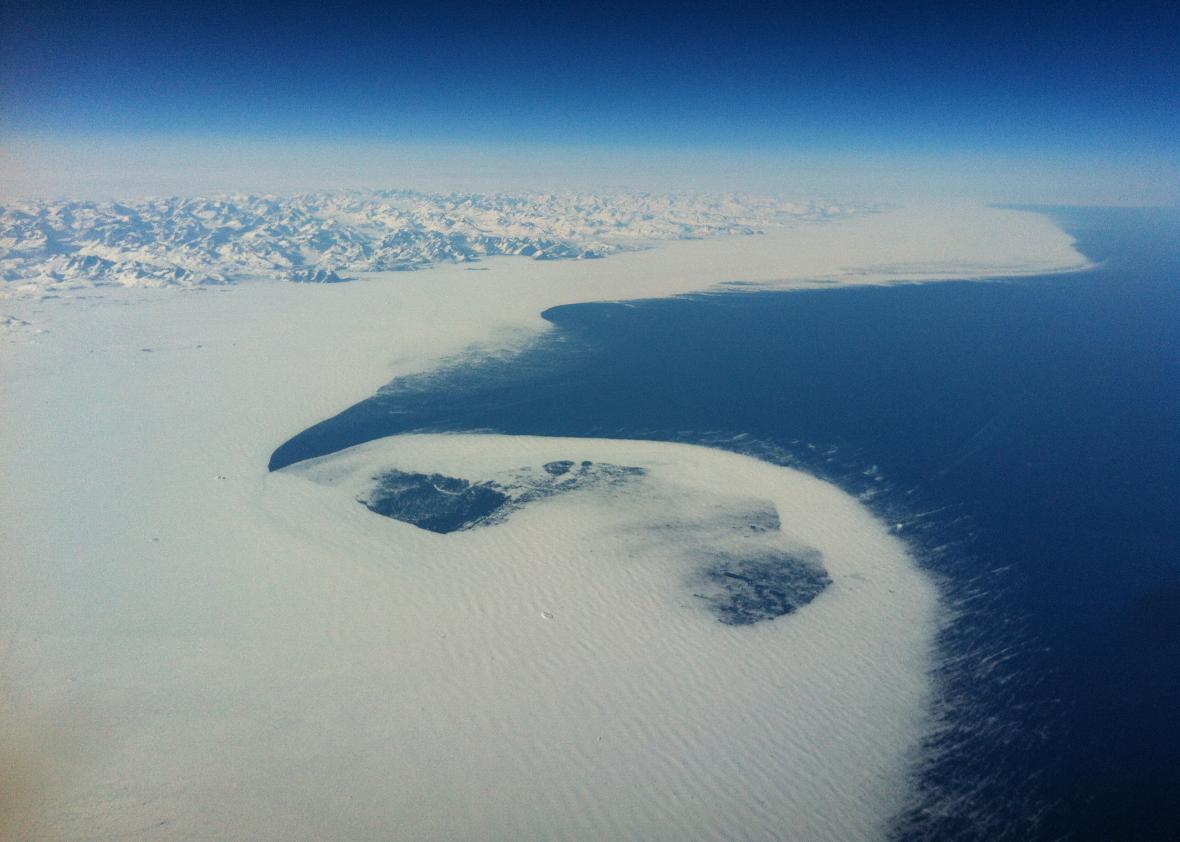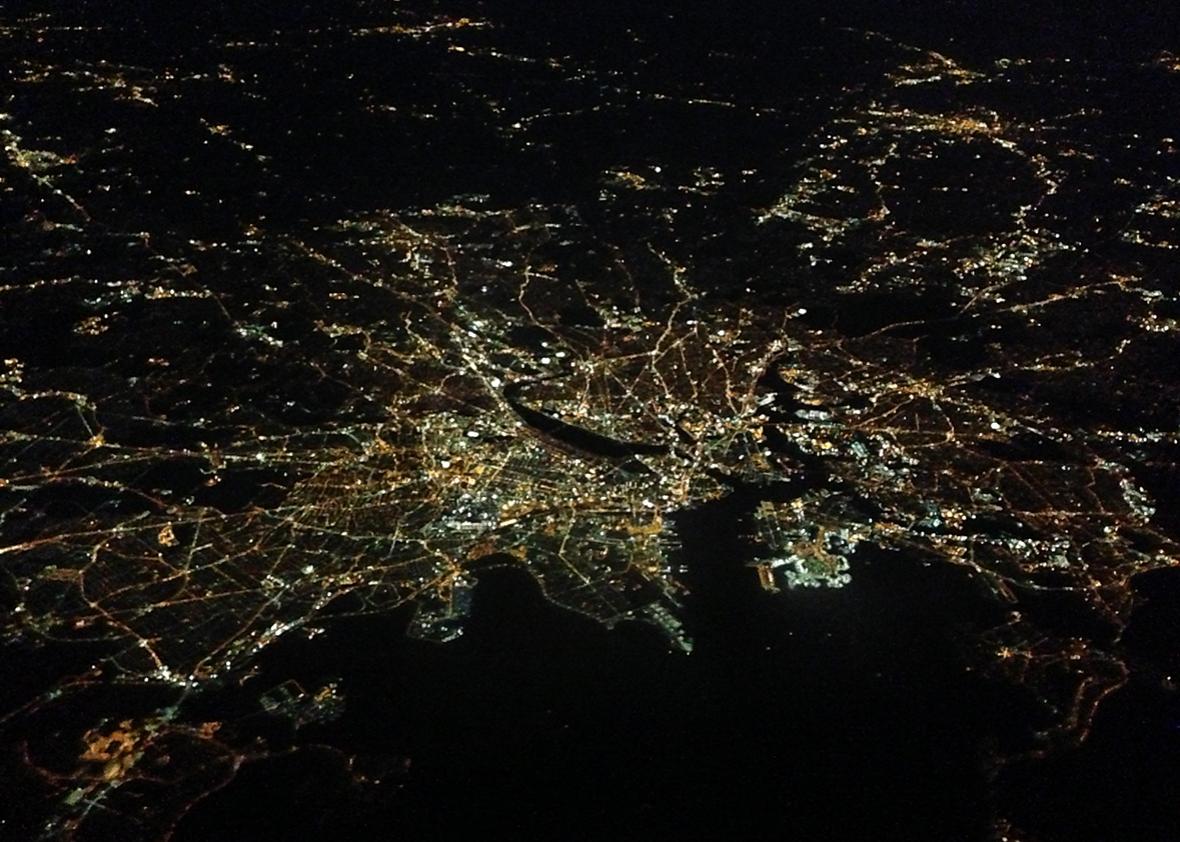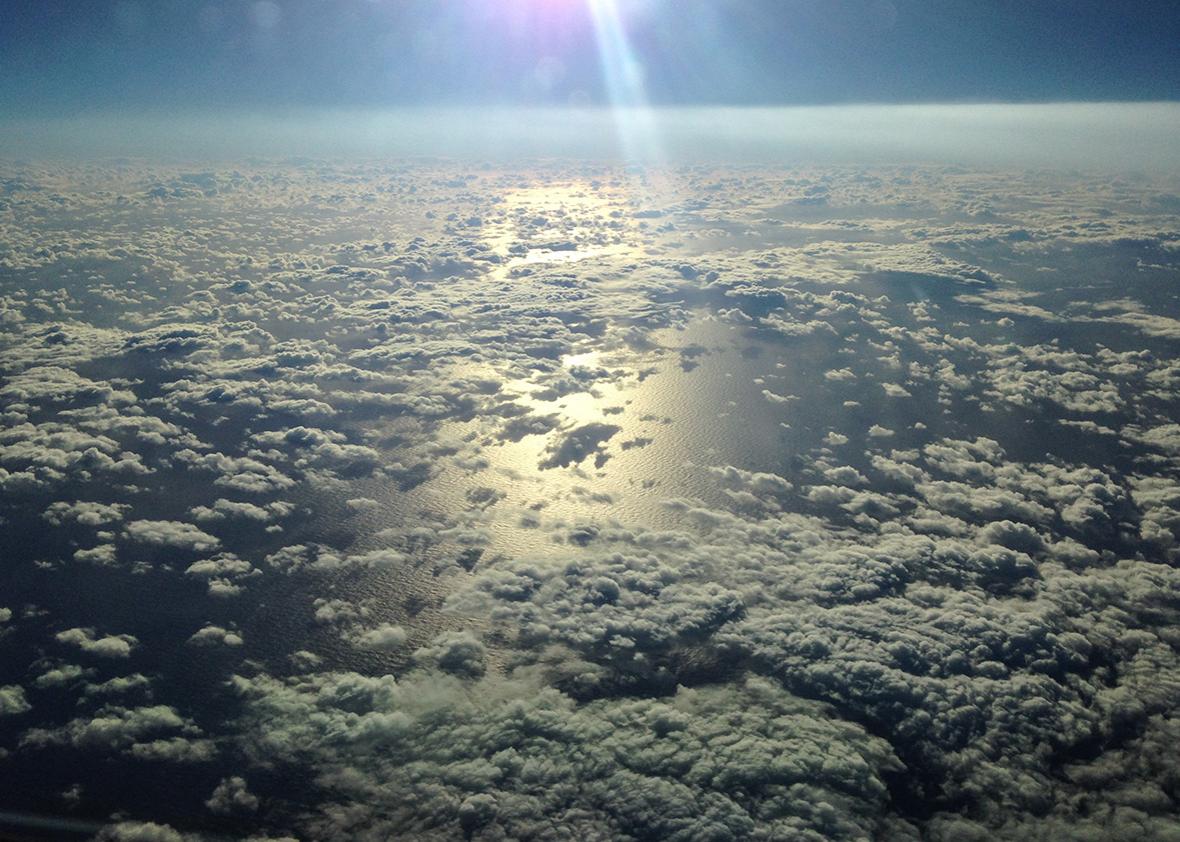If you ever need a heartwarming reminder of the human capacity to come together and build amazing things, visit an airplane factory. The technology, the teamwork, the sheer beauty of the nearly finished vessels, their broad, shining wings waiting to lift themselves into the skies—it’s enough to make even this seasoned airline pilot (and the skeptical friends I drag along on tours) stand up a little straighter.
For anyone with a stake in the aviation industry, however, the sight of all those new planes raises an increasingly urgent question: Who is going to fly them? America’s looming pilot shortage—commonly attributed to a wave of retirements, regulatory changes, and industry growth—has been described by the Wall Street Journal as potentially the worst in half a century. Kit Darby, an airline industry consultant, estimates that 18 percent of the pilots flying for major U.S. airlines in 2014 will retire by 2020, and three-fifths will retire by 2030. Last year Boeing calculated that the world will need more than half a million new pilots over the next two decades.
As someone who always dreamed of flying but delayed the decision for most of my twenties—instead, I started a Ph.D. in history and then worked as a management consultant—I’d like to put a call out to anyone, young or not-so-young, who’s ever wondered about turning left instead of right when boarding an airliner. Consider becoming a pilot. Seriously. It’s a great job.
The pilot’s career path isn’t always straightforward or easy these days, and the work is certainly challenging. But the job still amazes me in all the ways I hoped it might as a kid, and there are plenty of more practical advantages that aren’t appreciated outside the profession. Today, after 15 years of flying, I’m one of the few people I know who would happily keep working if I won the lottery. (OK, maybe part-time.)
I’m very lucky to have a job piloting the Boeing 747, the plane I always dreamed of flying. Plenty of others feel as strongly, whatever kind of flying they do. Last year I wrote Skyfaring, a book about the joys of my work. (Slate ran excerpts from the book, along with an episode of the Working podcast recorded on a 747 flight deck.) Since its publication I’ve begun to receive letters that remind me why I got into the profession in the first place. Many are from teenagers dreaming of becoming pilots—they already have “the bug,” as we say. Others are from middle-aged professionals who are carefully contemplating a change of career—a pleasing echo of my own belated start in aviation.
But the most gratifying messages come from retired aviators. Without exception, they look back on their careers with fondness and a nearly childlike sense of wonder. Les Fuchs, now 71, of Atlanta, dropped a promising law career in order to pursue his childhood dream of flight. He eventually flew the quite lovely Airbus A330 for Northwest Airlines. He described to me the retirement party his wife arranged when he finally hung up his wings: “She should have thrown the party for me when I became an airline pilot, because I feel I haven’t worked a day since.”

Mark Vanhoenacker
In a recent New York Times article, Paulette Perhach writes about the importance of finding a career that offers more than just income. She notes how difficult it can be for young people to “keep long-term happiness in mind,” and advises them to talk to professionals at different stages of a career. All the more reason for anyone who loves the window seat or the sight of a 747 lifting off to consider the question raised so passionately by retired folks like Capt. Fuchs: Why do so many pilots love their work?
The main reason, I’d argue, is that flying is simply fun. Three dimensions are better than two. You can try an introductory flying lesson at an airport near you. (Expect to pay around $100.)
Another reason to become a pilot—one that’s perhaps not on every career counselor’s radar—is that nearly all your workdays will be sunny. That light will fall on your multiwindowed corner office and on shining oceans, golden deserts, snowcapped peaks, and Simpsons-caliber cumulus clouds that will sail along with you over American prairies, English hedgerows, Iranian salt lakes, and the Straits of Malacca. Joan Didion wrote that “the most beautiful things I had ever seen had all been seen from airplanes,” and I suspect few pilots would disagree. As night descends you’ll watch a palmistry of cities come to glowing life on the darkness below, and you’ll wonder, too, about the rare lights of the empty places. When it comes to a wealth of astronomical wonders you’ll be a 1 percenter, seeing more stars, meteors, and auroras than almost anyone else on Earth.
Then you land. While many pilots are drawn to short-haul work (tempted by fewer nights away, smaller time-zone changes, and the chance to perform more frequent takeoffs and landings), long-haul pilots will experience our planet as expansively as anyone. Spinning a light-up globe in my childhood home in rural New England, it never occurred to me that Singapore, São Paulo, and Johannesburg were just a few of the metropolises I would someday know well enough to be able to find a nice breakfast or a watch strap or a good long run. And the benefits of working in the airline industry mean that your family, too, will see as much of the world as they wish.
Not to neglect the wonder of airplanes themselves. Jim Mathews, a former executive editor of Aviation Week, suggested to me that older light aircraft often used for training, equipped with vinyl seats and old-school instruments, might compare unfavorably to the technological wonders that entertain young people today; it’s not obvious that someone considering a career in tech these days would find themselves drawn to commercial aviation. But the continuum of technology that a pilot’s professional development may roughly mirror—from the hands-on and thoroughly analog joys of an older Cessna to the digital delights of a Dreamliner—is a marvelous story of human ingenuity, and a humbling one. Every pilot is standing on the shoulders of giants (hence the great views).

Mark Vanhoenacker
Of course, it’s not all blue skies up there. While in theory a pilot shortage should be good news for anyone contemplating a career in the sky, no aspiring pilot should underestimate the challenges of getting airborne these days. While some pilots will receive their training in the military or an airline-sponsored program (as I did, in Britain), many others will have to shoulder large loans, followed by at least some years earning substantially less than they might in another career. Potential airline pilots would be foolish not to carefully weigh other downsides to the job, such as the nights away from home, the challenges of aligning family and community activities with an ever-changing schedule, and the possibility that an economic crisis (or a medical one) will ground their career. I always advise the youngest people who write to me to consider a backup career, including whatever education it requires.
It’s also true that in comparison to many careers that might appeal to a bright young person today, a pilot’s work isn’t distinguished by creativity. But personally, I’ve found that the profession’s rules and rigid structure mean I have far more mental space (and free time) for interests outside work. Airlines and their schedules vary, but as a long-haul pilot I typically have between 24 and 48 hours off at a destination “downroute.” I’m only half-joking when I say that even if you don’t love flying you might consider becoming a pilot, because the doors to whatever you do love—learning Mandarin, climbing mountains, exploring Gothic architecture—open wide. What’s a working lifetime of that worth?
As a former denizen of academia and the business world, I’d also point out that the straightforward nature of a flight—takeoff, cruise, landing—lends itself to a blessedly simple arc of job satisfaction. I don’t take work home. (A 747 doesn’t fit in a briefcase.) And although every six months we’re given two days of tough simulator-based exams, the criteria are objective. My salary is based on seniority and choices that are open to everyone. There’s no room for politics or personality, the issues my friends in other careers complain about most often.
There’s a final, less tangible benefit of the career to mention, though it’s nothing I knew how to value in my teens or even my twenties. It’s something that makes me smile in recognition whenever I hear a businessperson or politician describe a “30,000-foot takeaway,” and I thought of it, too, after encountering a line Oliver Sacks wrote not long before his death: “…I have been able to see my life as from a great altitude, as a sort of landscape, and with a deepening sense of the connection of all its parts.”
This is language that a pilot can’t help but appreciate, maybe because our job gives us such large windows onto certain obvious but often-forgotten truths—that the world is enormous and beautiful, that everything is connected, and that all together we’re turning in the light of a star. “I see,” thought Isak Dinesen whenever she looked out of an airplane and realized that she had once again left the planet’s surface. “This was the idea.” A powerful and easily renewed sense of wonder isn’t the only thing to ask of a Monday morning (or a late Saturday night) at the office. But if the heartfelt letters I receive from retired pilots are anything to go by, it’s not a bad place to start.
